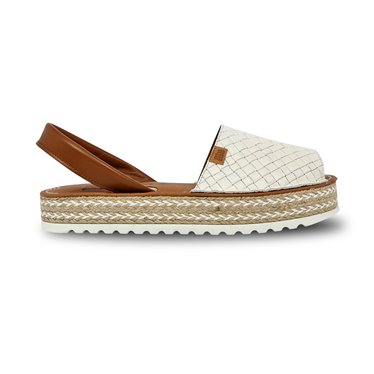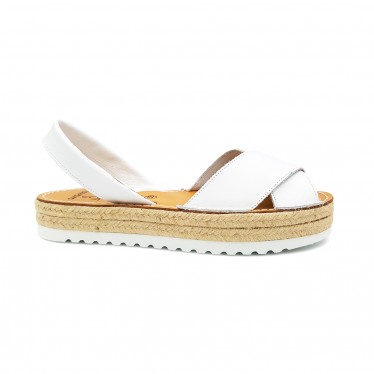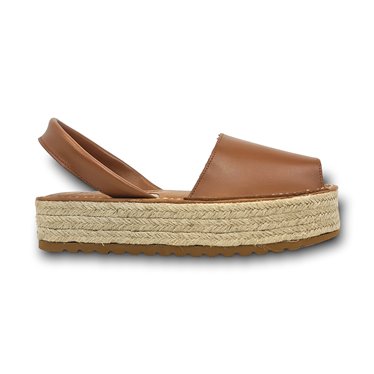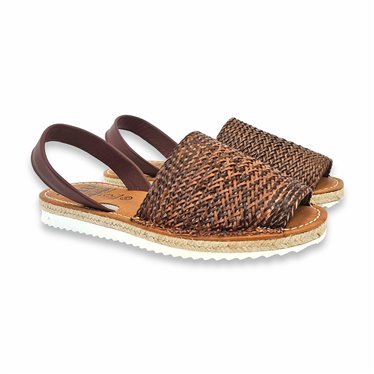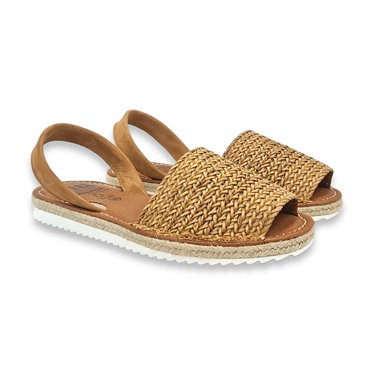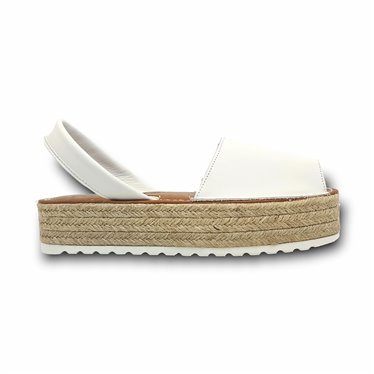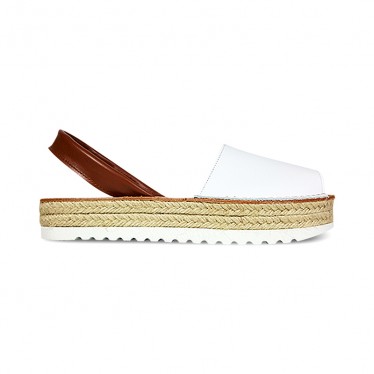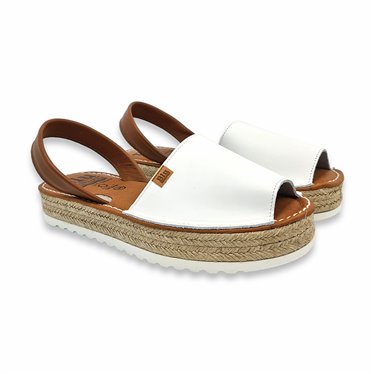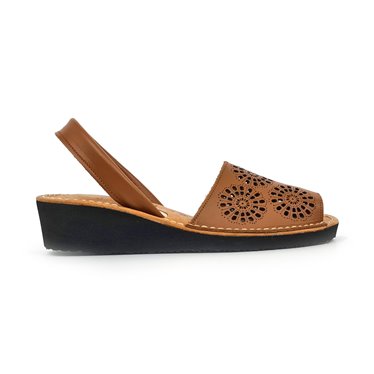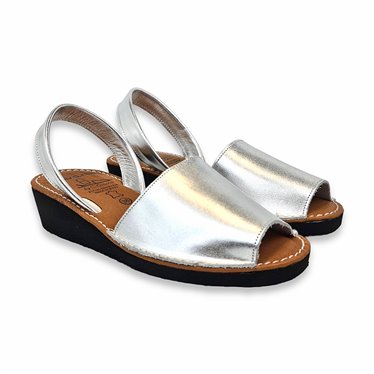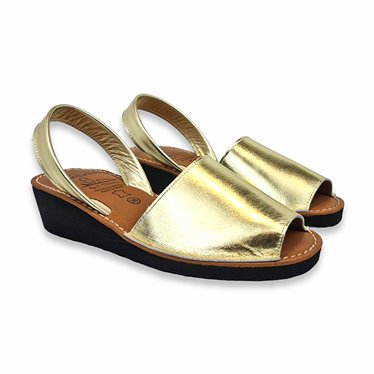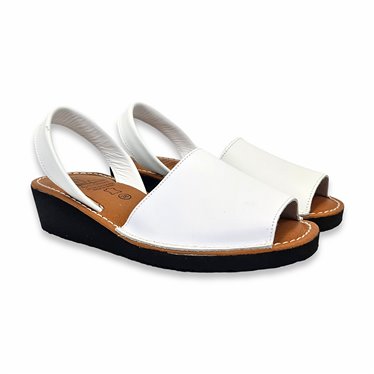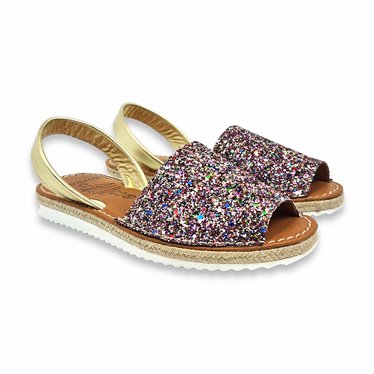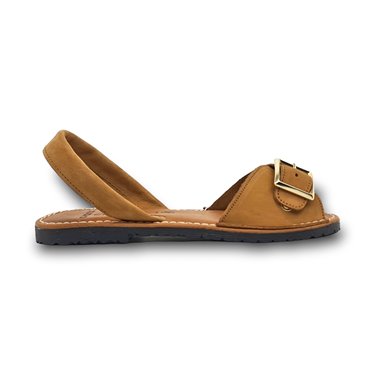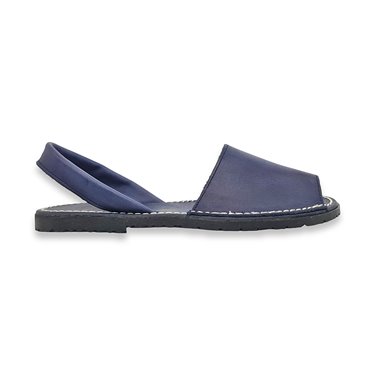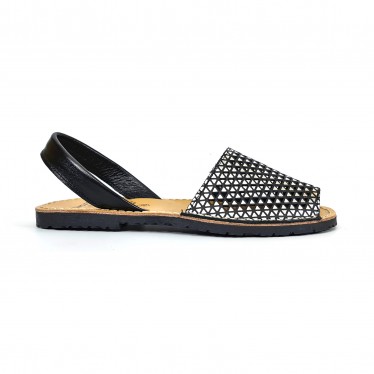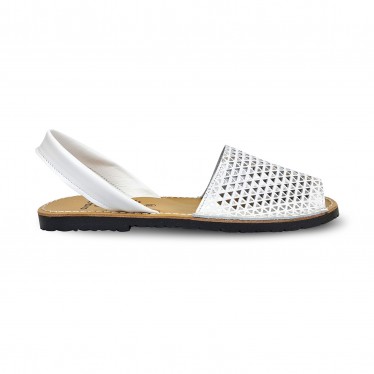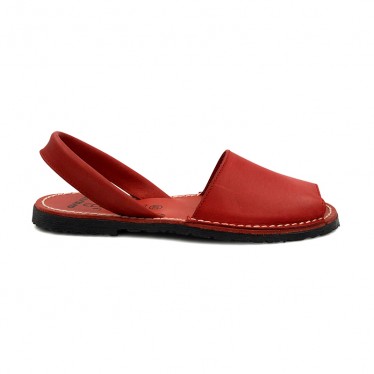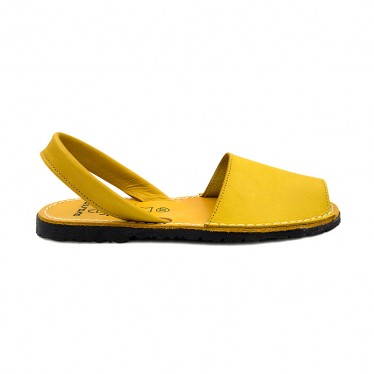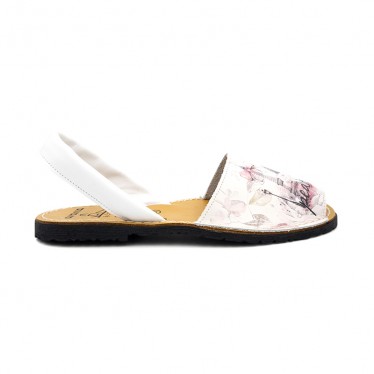Menorcan Sandals
- Women
- Men
- Girls
- Boys
-
Brands
- Amelie
- AngelitoS
- BDA
- BeCool Footwear
- Be Relax
- Berevëre
- Blando's
- BluSANDAL
- Boleta Shoes
- Casual
- C. Ortuño
- Classyco
- ComodoSan
- Comodo Sport
- Cuque Creando
- Desireé
- Digo Digo
- Diprieto Footwear
- DJ Santa
- Éxodo Shoes
- Garrido Muro
- Jarpex IN-SHOES
- Johnny Bulls
- Latino Shoes
- Manuel Medrano
- María Tovar
- Morxiva
- Moya Calzados
- Percla
- Pisable
- Primocx
- Richer Kontry
- Route 83
- TuPié
- Urban Jungles
-
Búsquedas
- Castellanos Borlas
- Castellanos en Cuero Online
- Mocasines Castellanos
- Mocasines Castellanos Burdeos
- Mocasines Hombre Borlas
- Tienda Botas Moteras
- Zapatos Castellanos
- Zapatos Comodo Sport
- Menorcan Sandals
- Cambios y gastos de envío
- SALES FROM 90
- SALES FROM 70 TO 89
- REBAJAS FROM 50 TO 69
- SALES FROM 40 TO 49
- SALES UP TO 39
- All items
Catalog
Menorcan Sandals
Subcategories
-
Womens Leather Menorcan Sandals Ankle Strap Padded Insole 15201 White,...
45,00 € In Stock⚠️SIZE CHART IN THE LAST PICTURE⚠️ You will look spectacular with these leather menorcan sandals. The ankle strap prevents the typical fall of the back strap. The padded insole makes them very comfortable. You can wear them with practically everything: skirts, shorts, jeans... you name it!
-
Womens Leather Menorcan Sandals Ankle Strap Padded Insole 15201 Black,...
45,00 € In Stock⚠️SIZE CHART IN THE LAST PICTURE⚠️ You will look spectacular with these leather menorcan sandals. The ankle strap prevents the typical fall of the back strap. The padded insole makes them very comfortable. You can wear them with practically everything: skirts, shorts, jeans... you name it!
-
Womens Platform Braided Leather Menorcan Sandals Padded Insole 10462...
44,00 € In Stock⚠️SIZE CHART IN THE LAST PICTURE⚠️ For a spectacular everyday look, wear these braided leather avarcas. As well as looking gorgeous, you'll be comfortable with their padded insole and ultra-light platform sole. They are so cool that you can combine them with whatever you want.
-
Womens Flat Menorcan Sandals Leather and Jute Padded Insole 15521 White,...
43,00 € In StockThese menorcan sandals in leather and jute look fantastic and bring a fresh, natural feel. The cushioned insole ensures all-day comfort. Perfect with flowy dresses, midi skirts or relaxed shorts. ⚠️SIZE CHART IN THE LAST PICTURE⚠️
-
Womens Leather Crossed Menorcan Sandals Platform 15394 Silver, by C. Ortuño
43,00 € In StockYou'll look amazing in these cross-strap leather menorcan sandals, adding a modern and flattering touch. The platform provides height without compromising comfort. Perfect with light dresses, midi skirts or flowy trousers. ⚠️SIZE CHART IN THE LAST PICTURE⚠️
-
Womens Leather Crossed Menorcan Sandals Platform 15394 Platinum, by C....
43,00 € In StockYou'll look amazing in these cross-strap leather menorcan sandals, adding a modern and flattering touch. The platform provides height without compromising comfort. Perfect with light dresses, midi skirts or flowy trousers. ⚠️SIZE CHART IN THE LAST PICTURE⚠️
-
Womens Leather Crossed Menorcan Sandals Platform 15394 White, by C. Ortuño
43,00 € In StockYou'll look amazing in these cross-strap leather menorcan sandals, adding a modern and flattering touch. The platform provides height without compromising comfort. Perfect with light dresses, midi skirts or flowy trousers. ⚠️SIZE CHART IN THE LAST PICTURE⚠️
-
Womens Flat Menorcan Sandals Leather and Jute Padded Insole 15521...
43,00 € In StockThese menorcan sandals in leather and jute look fantastic and bring a fresh, natural feel. The cushioned insole ensures all-day comfort. Perfect with flowy dresses, midi skirts or relaxed shorts. ⚠️SIZE CHART IN THE LAST PICTURE⚠️
-
Woman Leather Jute Menorcan Sandals Platform Cushioned Insole 9421...
43,00 € In StockAvarcas in leather jute lined by C. Ortuño, with esparto grass and rubber platform of 3 cm. Cushioned insole. Very comfortable.
-
Woman Leather Crossed Menorcan Sandals Platform 8394 White, by C. Ortuño
43,00 € In Stock⚠️SIZE CHART IN THE LAST PICTURE⚠️ Crossed top avarcas in leather by C. Ortuño, with esparto grass and rubber platform of 3 cm.
-
Woman Metallic Leather Menorcan Sandals Platform 8394 Silver, by C. Ortuño
43,00 € In Stock⚠️SIZE CHART IN THE LAST PICTURE⚠️ Crossed top avarcas in leather by C. Ortuño, with esparto grass and rubber platform of 3 cm.
-
Woman Metallic Leather Menorcan Sandals Platform 8394 Gold, by C. Ortuño
43,00 € In Stock⚠️SIZE CHART IN THE LAST PICTURE⚠️ Crossed top avarcas in leather by C. Ortuño, with esparto grass and rubber platform of 3 cm.
-
Womens Platform Leather Menorcan Sandals Padded Insole 16201 Leather, by...
42,00 € In Stock⚠️SIZE CHART IN THE LAST PICTURE⚠️ You'll look stunning in these beautiful platform sandals. Super comfortable thanks to their cushioned insole and ultra-light EVA sole. A summer classic that you can combine with casual and dressy outfits.
-
Womens Flat Menorcan Sandals Leather and Raffia Padded Insole 15550...
42,00 € In Stock⚠️SIZE CHART IN THE LAST PICTURE⚠️ With these flat Minorcan sandals for women made of leather and raffia, you'll look radiant! Thanks to their padded insole, you'll feel comfortable all day long. Pair them with summer dresses, shorts, or capri pants for a fresh and chic look.
-
Womens Flat Menorcan Sandals Leather and Raffia Padded Insole 15550...
42,00 € In Stock⚠️SIZE CHART IN THE LAST PICTURE⚠️ With these flat Minorcan sandals for women made of leather and raffia, you'll look radiant! Thanks to their padded insole, you'll feel comfortable all day long. Pair them with summer dresses, shorts, or capri pants for a fresh and chic look.
-
Womens Leather Platform Menorcan Sandals Padded Insole 15421 Leather, by...
42,00 € In Stock⚠️SIZE CHART IN THE LAST PICTURE⚠️ This pair of menorcan avarca sandals will make you look spectacular! With its elegant and modern design, you'll feel comfortable all day thanks to its padded insole. Pair them with a summer dress or jeans for a versatile look. A must-have in your wardrobe!
-
Womens Platform Leather Menorcan Sandals Padded Insole 16201 White, by...
42,00 € In Stock⚠️SIZE CHART IN THE LAST PICTURE⚠️ You'll look stunning in these beautiful platform sandals. Super comfortable thanks to their cushioned insole and ultra-light EVA sole. A summer classic that you can combine with casual and dressy outfits.
-
Woman Leather Menorcan Sandals Esparto Sole 8201L White, by C. Ortuño
42,00 € In Stock⚠️SIZE CHART IN THE LAST PICTURE⚠️ Woman Leather Menorcan Avarcas Esparto Sole 8201L White, by C. Ortuño. With 3 cm. sole platform with esparto grass linning.
-
Womens Platform Leather Menorcan Sandals Padded Insole 16201 Black, by...
42,00 € In Stock⚠️SIZE CHART IN THE LAST PICTURE⚠️ You'll look stunning in these beautiful platform sandals. Super comfortable thanks to their cushioned insole and ultra-light EVA sole. A summer classic that you can combine with casual and dressy outfits.
-
Woman Leather Menorcan Sandals Esparto Sole 9201 White, by C. Ortuño
42,00 € In Stock⚠️SIZE CHART IN THE LAST PICTURE⚠️ Woman Leather Menorcan Avarcas Esparto Sole 8201L White, by C. Ortuño. With 3 cm. sole platform with esparto grass linning.
-
Womens Wedged Openwork Leather Menorcan Sandals Padded Insole 3471...
42,00 € In Stock⚠️SIZE CHART IN THE LAST PICTURE⚠️ You'll look gorgeous in these openwork leather avarcas. A model with wedge and padded insole that will give you extra comfort. A versatile pair of menorquinas that will go with everything.
-
Womens Wedged Openwork Leather Menorcan Sandals Padded Insole 3471...
42,00 € In Stock⚠️SIZE CHART IN THE LAST PICTURE⚠️ You'll look gorgeous in these openwork leather avarcas. A model with wedge and padded insole that will give you extra comfort. A versatile pair of menorquinas that will go with everything.
-
Womens Leather and Raffia Wedged Menorcan Sandals Padded Leather Insole...
42,00 € In StockYou'll look fantastic in these leather and raffia menorcan sandals, perfect for adding a special touch to any outfit. The wedge elongates the silhouette, and the cushioned leather insole ensures comfort. They pair beautifully with dresses, skirts, or jeans. ⚠️SIZE CHART IN THE LAST PICTURE⚠️
-
Womens Platform Split Leather Menorcan Sandals Padded Insole 15202 Pink,...
39,00 € In Stock⚠️SIZE CHART IN THE LAST PICTURE⚠️ You will look amazing with these suede menorcan sandals. You will be super comfortable thanks to their padded insole and their ultra-light Eva platform. As they come in 2 tones, you can combine them with anything.
-
Woman Leather Wedged Menorcan Sandals Padded Insole 3190 Silver, by C....
39,00 € In Stock⚠️SIZE CHART IN THE LAST PICTURE⚠️ With these Wedge Avarcas Menorquinas, you'll look fabulous. Their design will keep you comfortable all day, thanks to the padded insole and wedge. Pair them with any outfit, from jeans to dresses, for a versatile and stylish look.
-
Woman Leather Wedged Menorcan Sandals Padded Insole 3190 Gold, by C. Ortuño
39,00 € In Stock⚠️SIZE CHART IN THE LAST PICTURE⚠️ With these Wedge Avarcas Menorquinas, you'll look fabulous. Their design will keep you comfortable all day, thanks to the padded insole and wedge. Pair them with any outfit, from jeans to dresses, for a versatile and stylish look.
-
Womens Platform Split Leather Menorcan Sandals Padded Insole 15202...
39,00 € In Stock⚠️SIZE CHART IN THE LAST PICTURE⚠️ You will look amazing with these suede menorcan sandals. You will be super comfortable thanks to their padded insole and their ultra-light Eva platform. As they come in 2 tones, you can combine them with anything.
-
Womens Leather Wedge Menorcan Sandals Padded Insole 2211 Black, by C....
39,00 € In Stock⚠️SIZE CHART IN THE LAST PICTURE⚠️ You'll look fantastic in these Menorcan Sandals with wedge! The high-quality leather and padded insole ensure comfort all day long. Pair them with summer dresses or jeans for a casual chic look.
-
Womens Platform Split Leather Menorcan Sandals Padded Insole 15202...
39,00 € In Stock⚠️SIZE CHART IN THE LAST PICTURE⚠️ You will look amazing with these suede menorcan sandals. You will be super comfortable thanks to their padded insole and their ultra-light Eva platform. As they come in 2 tones, you can combine them with anything.
-
Womens Platform Split Leather Menorcan Sandals Padded Insole 15202 Navy,...
39,00 € In Stock⚠️SIZE CHART IN THE LAST PICTURE⚠️ You will look amazing with these suede menorcan sandals. You will be super comfortable thanks to their padded insole and their ultra-light Eva platform. As they come in 2 tones, you can combine them with anything.
-
Womens Leather Wedge Menorcan Sandals Padded Insole 2211 White, by C....
39,00 € In Stock⚠️SIZE CHART IN THE LAST PICTURE⚠️ You'll look fantastic in these Menorcan Sandals with wedge! The high-quality leather and padded insole ensure comfort all day long. Pair them with summer dresses or jeans for a casual chic look.
-
Womens Leather Platform Menorcan Sandals Glitter and Padded Insole 15275...
39,00 € In Stock⚠️SIZE CHART IN THE LAST PICTURE⚠️ Can you imagine how spectacular you'll look in these leather and glitter menorcan sandals? Not only stylish, but you'll also feel comfortable thanks to their padded insole. Pair them with a casual chic or urban look to stand out.
-
Womens Platform Split Leather Menorcan Sandals Padded Insole 15202...
39,00 € In Stock⚠️SIZE CHART IN THE LAST PICTURE⚠️ You will look amazing with these suede menorcan sandals. You will be super comfortable thanks to their padded insole and their ultra-light Eva platform. As they come in 2 tones, you can combine them with anything.
-
Womens Glitter Leather Wedged Menorcan Sandals Padded Leather Insole...
38,00 € In StockYou'll look amazing in these glitter leather menorcan sandals, adding a subtle shine that stands out. The wedge heel and cushioned insole ensure all-day comfort. Ideal with flowy dresses, midi skirts, or wide-leg trousers. ⚠️SIZE CHART IN THE LAST PICTURE⚠️
-
Womens Suede Leather Flat Menorcan Sandals Padded Insole 2552 Leather,...
35,00 € In Stock⚠️SIZE CHART IN THE LAST PICTURE⚠️ You'll look fantastic in these flat Menorcan sandals! The nubuck leather makes them irresistible. With their padded insole, you'll be comfortable all day long! Pair them with summer dresses or jeans for a casual chic look.
-
Womens Suede Leather Flat Menorcan Sandals Padded Insole 2552 Black, by...
35,00 € In Stock⚠️SIZE CHART IN THE LAST PICTURE⚠️ You'll look fantastic in these flat Menorcan sandals! The nubuck leather makes them irresistible. With their padded insole, you'll be comfortable all day long! Pair them with summer dresses or jeans for a casual chic look.
-
Womens Suede Leather Menorcan Sandals Padded Insole 2437 Camel by C. Ortuño
35,00 € In Stock⚠️SIZE CHART IN THE LAST PICTURE⚠️ You'll look gorgeous in these original suede menorcan sandals. Flat and padded to be very comfortable. So beautiful that you can combine them with almost anything, from skirts and dresses to trousers.
-
Womens Suede Leather Menorcan Sandals Padded Insole 2437 Black, by C....
35,00 € In Stock⚠️SIZE CHART IN THE LAST PICTURE⚠️ You'll look gorgeous in these original suede menorcan sandals. Flat and padded to be very comfortable. So beautiful that you can combine them with almost anything, from skirts and dresses to trousers.
-
Woman Leather Menorcan Sandals Colour Insole 2010-S Blue, by C. Ortuño
34,00 € In Stock⚠️SIZE CHART IN THE LAST PICTURE⚠️ Cowhide Leather women´s avarcas by C. Ortuño, with 1.50 cm rubber sole.
-
Woman Openwork Leather Menorcan Sandals 336 Black, by C. Ortuño
34,00 € In Stock⚠️SIZE CHART IN THE LAST PICTURE⚠️ Beautiful menorcan avarcas for women in stamped leather. The upper alternates an openwork of triangles with silver details.
-
Woman Openwork Leather Menorcan Sandals 336 White, by C. Ortuño
34,00 € In Stock⚠️SIZE CHART IN THE LAST PICTURE⚠️ Beautiful menorcan avarcas for women in stamped leather. The upper alternates an openwork of triangles with silver details.
-
Woman Leather Menorcan Sandals Colour Insole 2010-S Red, by C. Ortuño
34,00 € In Stock⚠️SIZE CHART IN THE LAST PICTURE⚠️ Cowhide Leather women´s avarcas by C. Ortuño, with 1.50 cm rubber heels.
-
Woman Leather Menorcan Sandals Colour Insole 2010-S Leather, by C. Ortuño
34,00 € In Stock⚠️SIZE CHART IN THE LAST PICTURE⚠️ Cowhide Leather women´s avarcas by C. Ortuño, with 1.50 cm rubber sole.
-
Women's Metallic Embossed Leather Menorcan Sandals 522 Silver, by...
34,00 € In StockYou'll look stunning in these embossed metallic leather menorcan sandals, adding a sophisticated touch to any outfit. Flat and incredibly comfortable, they’re ideal for all-day wear. Pair them with flowy dresses, midi skirts, or linen trousers. ⚠️SIZE CHART IN THE LAST PICTURE⚠️
-
Woman Leather Menorcan Sandals Colour Insole 2010-S Yellow, by C. Ortuño
34,00 € In Stock⚠️SIZE CHART IN THE LAST PICTURE⚠️ Cowhide Leather women´s avarcas by C. Ortuño, with 1.50 cm rubber sole.
-
Women's Embossed Leather Menorcan Sandals 523 Leather, by C. Ortuño
34,00 € In StockYou'll look amazing in these embossed leather menorcan sandals, a classic design with a unique touch. The flat sole ensures all-day comfort. Wear them with flowy dresses, midi skirts or jeans for a relaxed look. ⚠️SIZE CHART IN THE LAST PICTURE⚠️
-
Women's Embossed Leather Menorcan Sandals 523 White, by C. Ortuño
34,00 € In StockYou'll look amazing in these embossed leather menorcan sandals, a classic design with a unique touch. The flat sole ensures all-day comfort. Wear them with flowy dresses, midi skirts or jeans for a relaxed look. ⚠️SIZE CHART IN THE LAST PICTURE⚠️
-
Women's Embossed Leather Menorcan Sandals 523 Beige, by C. Ortuño
34,00 € In StockYou'll look amazing in these embossed leather menorcan sandals, a classic design with a unique touch. The flat sole ensures all-day comfort. Wear them with flowy dresses, midi skirts or jeans for a relaxed look. ⚠️SIZE CHART IN THE LAST PICTURE⚠️
-
Women's Metallic Embossed Leather Menorcan Sandals 522 Pink Gold,...
34,00 € In StockYou'll look stunning in these embossed metallic leather menorcan sandals, adding a sophisticated touch to any outfit. Flat and incredibly comfortable, they’re ideal for all-day wear. Pair them with flowy dresses, midi skirts, or linen trousers. ⚠️SIZE CHART IN THE LAST PICTURE⚠️
-
Woman Leather Menorcan Sandals Eiffel Tower 331AV White, by C. Ortuño
33,00 € In Stock⚠️SIZE CHART IN THE LAST PICTURE⚠️ Leather women´s avarcas with Paris print by C. Ortuño, with 1.50 cm rubber sole height.
- 1
- 2
In its origin, the “albarca” or covers is a type of rustic footwear always linked to the rural world, mainly made of leather or rawhide. At present, it covers the foot plants, and is secured to them with a leather strip above the heel, and a spade that covers the instep leaving the tip of the fingers open.
Avarcas are characterized by being a type of practical footwear and adapted to the environment, manufactured in a self-sufficient way by optimizing resources, and designed especially for daily work.
The avarcas of leather are undoubtedly one of the oldest forms of footwear in the Iberian Peninsula. There are many variants of this type of footwear in Spain (Basque albarcas, Castilian avarcas, etc.), although undoubtedly among the best known is the famous Menorcan avarca.
Since Menorcan Avarcas are native to Menorca, many people call them by their place of origin, and simply call them “Menorcan”.
Although its origin is attributed to the rural area of the island of Menorca, there are others that suggest that Avarcas have a military origin. It is said that the first to use them were the “slingers”, former soldiers of the Balearic Islands, from the time of confrontation between Hannibal and the Romans, who fought by throwing stones with a sling.
Given that the land of the island of Menorca is very stony, the peasants of the area needed a resistant and flexible footwear at the same time, so they began to use the avarcas during their long days of rural work, to protect their feet.
Originally, these avarcas were made entirely in leather, but during the first half of the twentieth century, thanks to the proliferation of modern vehicles, they began to use other materials in the sole: Recycled tires, when these were no longer usable by vehicles. Currently, other rubbers, plastics and synthetic materials are also used, but the tire tread is still one of the most widespread.
This was a decisive change given that today they are known precisely for their characteristic tire sole. Thanks to this sole, the current covers are even more resistant, non-slip and flexible. They also protect the foot much better from moisture and irregularities of the ground.
The current avarcas are characterized by the resistance and durability of the sole, its flexibility, and the relatively inexpensive manufacturing.
It was from the 60s when this rural footwear transcended the summer scope in general, being “exported” by tourists from the islands.
Menorcans never go out of style thanks to the fact that, in addition to their characteristic advantages, they have adapted to fashion trends. The manufacturers have been able to adapt them to current trends, and today there are variants of all styles: flat, wedge-shaped, engraved, with colourful serigraphs and even with pyrography.
The resistance of avarcas makes them especially suitable for the most “shoe-breakers”: Children. For them, in addition to their traditional fastening system (a leather strap behind the heel), they have been adapted for the little ones by adding a buckle or a Velcro closure.




















